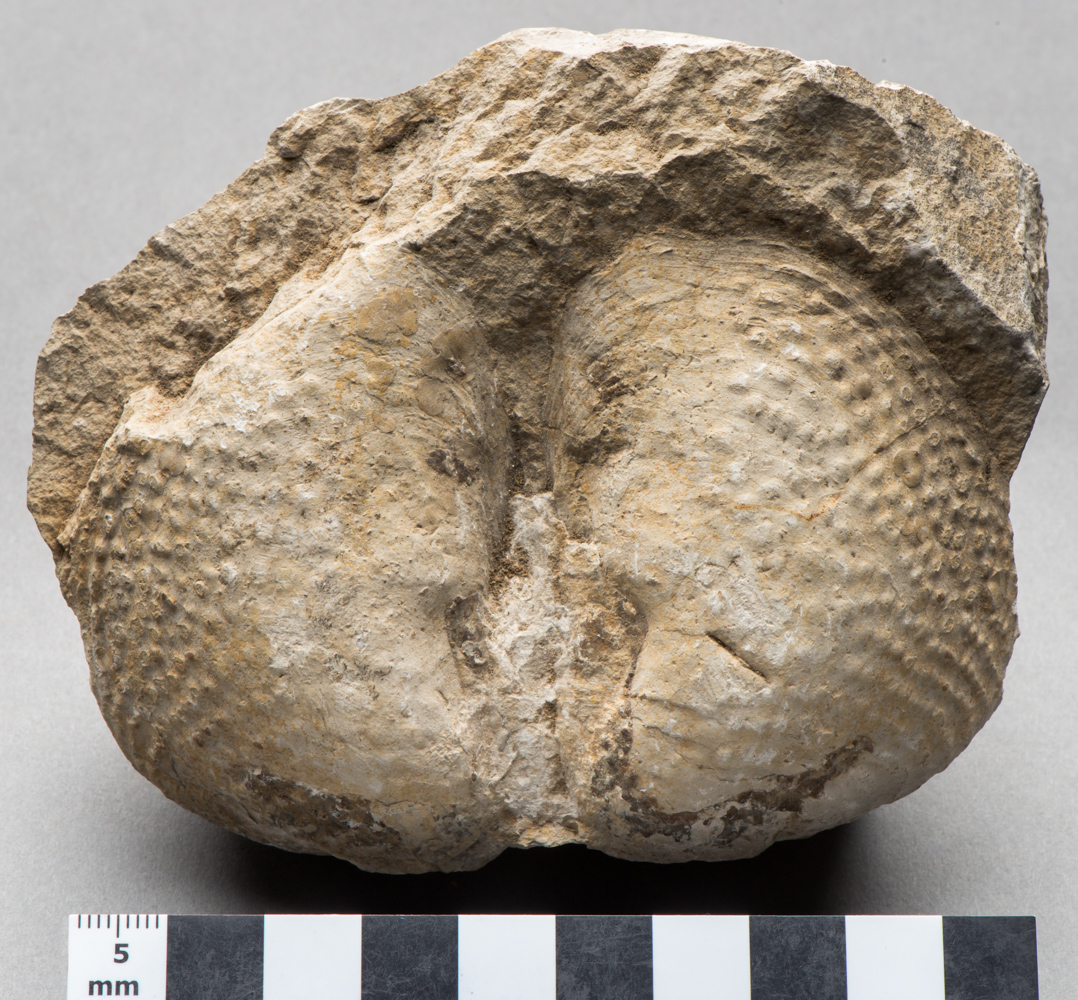Clues to ancient environments
This is a cockle-like shell from the Portland Limestone in Purbeck. Like a modern-day sea shell, both shells or ‘valves’ are sprung open showing that the animal was not transported far before burial. It is the large muscle inside that keeps the shells together, but when that rots, they naturally spring open and are easily broken apart by wave action. This suggests that the environment in which this animal lived, and died, was calm.
Clues about what the environment was like millions of years ago are also contained in the rocks in which these fossils are found. The rocks in the Portland Limestone in Purbeck are a chalky micrite which is a fine calcium mud that settled in sea water lagoons, probably protected from the sea by a beach. In contrast, the Portland Limestone on Portland is an oolitic limestone made of millions of minute egg-shaped structures that formed through the action of waves and currents in a shallow sea.

